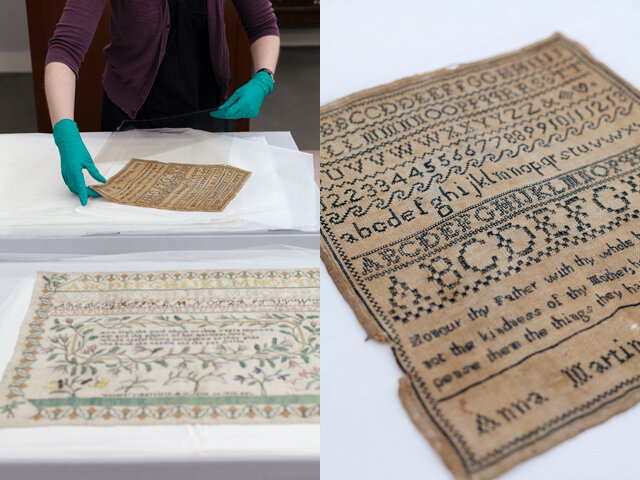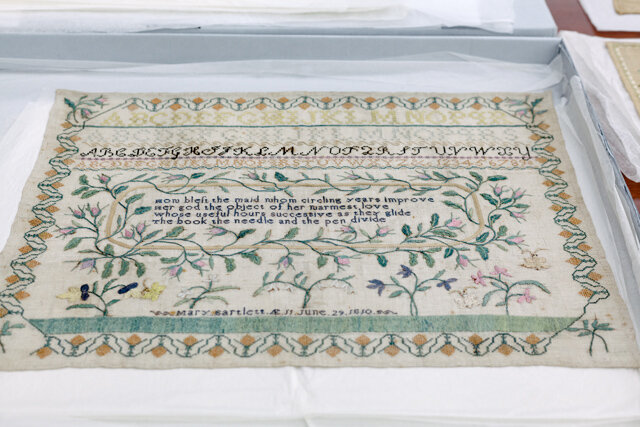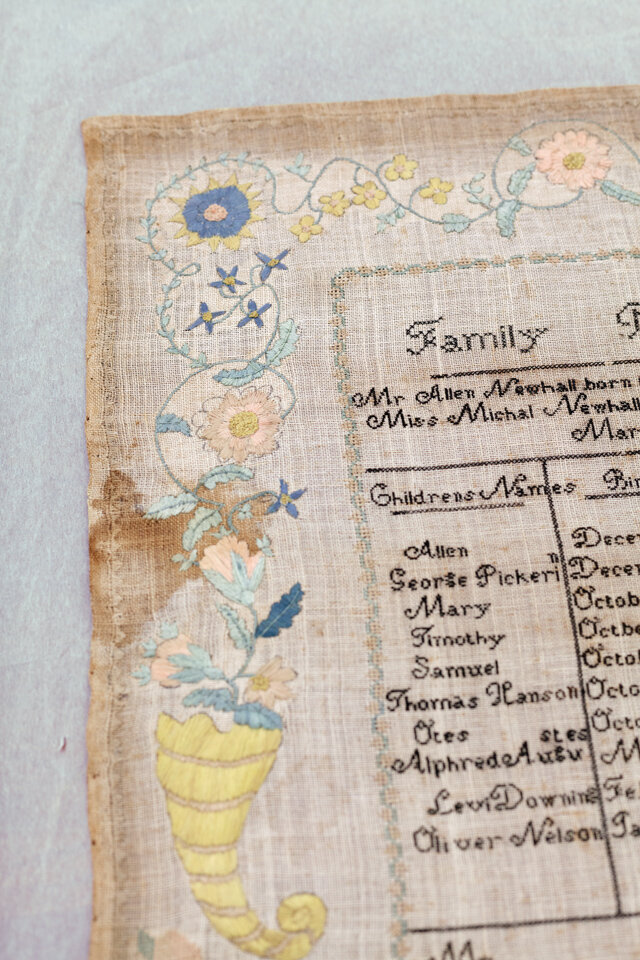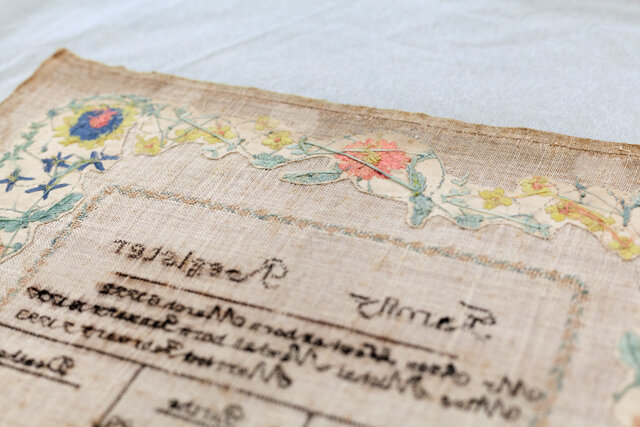Embroidery samplers from the Chicago History Museum
My recent visit to the Chicago History Museum it's probably one of the highlights of my last trip to the Windy City. There, I was able to spend some good time with embroidery samplers that are part of their comprehensive collection of textiles of all sorts. I had the privilege to look up close and touch the highly detailed needlework. I was particularly interested on how these early pieces are a living testimony about technique, colour usage and design process. I'm really lucky to have had amazing hosts during my visit. I'm really grateful of Britta and Petra who were very kind to open the archives and collection for my research.
All these samples are exemplary of masterful execution. The most used stitch is cross-stitch. It's possible to be found on alphabets, flowers and animals on linen fabrics. When compared to contemporary versions of similar subjects I think the most outstanding difference it's the size of stitches: each diagonal expands over two threads of the linen. This little detail makes each cross a remarkable exercise of attention and patience.
The colour of these samples was also a feature that I got caught up with. They all show a fairly muted palette and also many stains on the fabric. The exposure to light and the passing of time have caused a substantial fading of threads. Fortunately it's possible to discover their original color by reviewing the back side of the samples. It was also fascinating to discover small embroidered areas that reveal a creative twist from the embroiderer: when a specific colour was gone they would finish the section with a similar or completely different tone.
I'm still inspecting all the photos I took, and it's exciting to find a new detail that went unnoticed during my visit. During the next weeks I'll be sharing some of these findings on my blog. Stay tuned!
[Español]
Uno de los mejores momentos en mi reciente viaje a Chicago fue la visita al Museo de Historia de la ciudad (Chicago History Museum) donde pude observar (¡y tocar!) parte de la colección de muestrarios que guardan en sus depósitos. Actualmente estoy investigando muestrarios de bordado ya que me interesa descubrir en estas piezas el testimonio de las primeras puntadas que plasma la bordadora en la tela y las decisiones que toma en cuanto a técnica, complejidad, uso de color y diseños. Agradezco profundamente a Britta y Petra quienes gentilmente abrieron los archivos de la colección para mi investigación.
Estos muestrarios son ejemplo de paciencia y ejecución técnica. La puntada más utilizada es el punto de cruz con el que se bordan abecedarios, flores y animales sobre telas de lino. Si tuviera que señalar una diferencia entre estos bordados y las versiones contemporáneas es quizás el tamaño de las puntadas: cada diagonal se extiende sobre dos hilos de la tela de lino haciendo de cada cruz una muestra admirable de trabajo y dedicación.
También llamó mi atención el color de los bordados. Todos muestran una paleta bastante desaturada y muchas manchas sobre la tela. El paso del tiempo y la exposición a la luz han provocado una pérdida sustancial del color de los hilos pero felizmente es posible descubrir el colorido original al inspeccionar las muestras por el revés. Otro detalle fascinante fue encontrarse con pequeñas áreas de bordado que delatan que la bordadora, sin la cantidad suficiente de hilado de un determinado color, tuvo que terminar la sección usando otro tono.
Sigo revisando todas las imágenes que tomé y me emociono cada vez que descubro algún detalle que no noté en la visita. En la próximas semanas estaré compartiendo en el blog algunos de esos descubrimientos.












